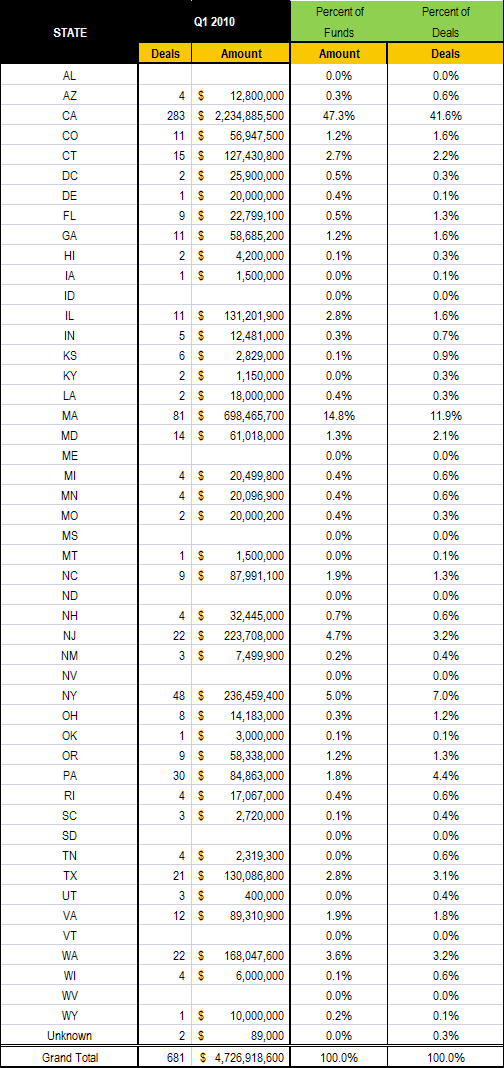MoreLIP: The Quarterly Venture Capital Routine
04/17/2010 — George Lipper, WBT Showcase
April offers up more than blossoming cherry trees, Boston tea parties and never-say-die Chicago Cubs fans. It’s also the first quarter report of venture capital investment performance, which tends to reinforce the old saw that the more things change, the more they stay the same.
According to the Money Tree, unveiled last week, reporting venture capitalists (which is not all of them) announced first quarter investments of $4.7 billion, a little less than the previous quarter and more than the same quarter last year. The investment total largely stayed well within the parameters of what the forecasters predict as the new norm, a more consistent investment level into the future.
Regardless of the changes overall, California and Massachusetts still combine to consumed more than 60% of all the investment dollars and more than half the investment deals, which, of course, also means the other 48 states and DC are consigned to share less than 40% of the available investment capital.
New York (5%), New Jersey (4.7%) and Washington State (3.6%) round out the top 5. A scattering of other stories in today’s Lipper Current convey the relative joys (not many) and disappointments in their respective states.
As in the past, with the kind assistance of the National Venture Capital Association, PricewaterhouseCoopers and Reuters, we have a state-by-state list of investments for your perusal.

Eight states reported no investments: Alabama, Idaho, Maine, Mississippi, North Dakota, Nevada, S. Dakota and Vermont. Five other states recorded investments, but without enough money to break 1/10th of 1% of the total: Iowa, Kentucky, Montana, Tennessee and Utah.
Of course, no quarter, not even multiple quarters, can foretell much about the direction of venture capital investing in the US. While the quarterly reports provide some interesting talking points, in truth they are really a passing view. The fresh edition of the Money Tree in 2010 does restate that the same states attract roughly the same share of venture funding as in other quarters, including those that trail the pack. These reports are also subject to voluntary participation by venture capital firms, which, as good as they are, are nonetheless incomplete. The best guess I've heard is about 70% involvement.
One of the divisions of the report that I find encouraging is increased allotment of of funds invested in the seed/startup and early stages of investing. I can only speculate about why, but it may be that the growth of angel investing has created more competition for attractive startup.
That said, I recommend you read the excellent report (posted elsewhere in this week's newsletter) on the importance of size, written by Jason Liou and published by SVB Financial Group: here